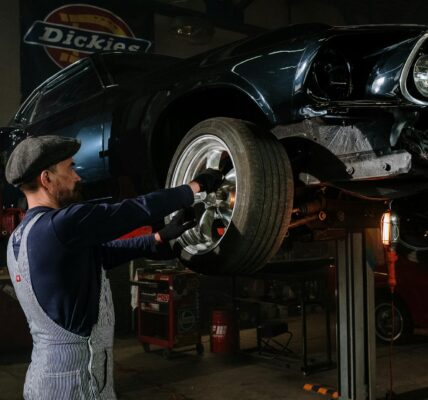Ultrasonic cleaners are powerful devices used to clean a wide range of items by generating high-frequency sound waves in a cleaning solution, a process known as ultrasonic cavitation. While highly effective for many materials and contaminants, there are certain items and materials that should not be cleaned in an ultrasonic cleaner due to the risk of damage or safety concerns. Understanding what should be avoided helps prevent potential harm to objects and ensures the longevity and effectiveness of the ultrasonic cleaning equipment. Here’s a detailed exploration of items that should not be cleaned in an ultrasonic cleaner.
Delicate or Fragile Materials
- Soft Metals: Materials such as gold, silver, and aluminum can be cleaned in ultrasonic cleaners, but caution is necessary. Soft metals may scratch or deform if exposed to high-intensity ultrasonic vibrations for extended periods.
- Gemstones: Certain gemstones, including opals, pearls, and emeralds, are delicate and can be damaged by ultrasonic cleaning. Porous stones, treated gemstones, and those with fractures or inclusions should be cleaned using gentler methods to avoid loosening settings or causing discoloration.
- Antique or Decorative Items: Items with delicate decorative finishes, patinas, or surface treatments (e.g., antique silverware, ornate metalwork) should not be cleaned in ultrasonic cleaners to prevent damage to the finish or detailing.
Electronics and Electrical Components
- Sensitive Components: Electronic devices, circuit boards, and electrical components can be damaged by ultrasonic cleaning if not properly protected. Water ingress, corrosion, and damage to delicate components (e.g., microchips, capacitors) can occur due to the conductivity of water-based cleaning solutions and the intensity of ultrasonic vibrations.
- Magnetic Components: Magnetic materials or components (e.g., hard drives, magnetic sensors) should not be exposed to ultrasonic cleaning as it can disrupt magnetic fields and damage sensitive components.
Optical Lenses and Instruments
- Camera Lenses: Camera lenses, telescopes, microscopes, and other optical instruments should be cleaned using specialized lens cleaning solutions and microfiber cloths. Ultrasonic vibrations can potentially misalign lens elements, scratch lens coatings, or introduce moisture, compromising optical clarity and performance.
- Fragile Optics: Delicate optical components, including prisms, mirrors, and laser optics, should be handled with care and cleaned using approved methods to preserve precision and avoid damage.
Certain Plastics and Rubber Materials
- Soft Plastics: Soft or flexible plastics, such as PVC or polyethylene, can deform, crack, or lose their shape when exposed to ultrasonic vibrations and cleaning solutions. Hard plastics like acrylic may also scratch or craze if subjected to aggressive cleaning processes.
- Rubber Seals and Gaskets: Rubber components used in automotive parts, machinery, or seals should be cleaned cautiously. Ultrasonic cleaning can accelerate deterioration, harden rubber surfaces, or cause dimensional changes that compromise sealing effectiveness.
Biological Contaminants and Hazardous Materials
- Biological Samples: Biological materials, including blood, tissues, or bodily fluids, should not be cleaned in ultrasonic cleaners unless specifically designed and validated for medical or laboratory use. Improper cleaning of biological contaminants can pose health risks and lead to cross-contamination.
- Toxic or Hazardous Materials: Cleaning toxic chemicals, radioactive materials, or hazardous substances in ultrasonic cleaners can contaminate the cleaning solution, equipment, or environment. Proper disposal and handling procedures must be followed for hazardous waste.
Guidelines for Safe and Effective Ultrasonic Cleaning
To maximize the benefits of ultrasonic cleaning while avoiding potential damage:
- Consult Manufacturer Recommendations: Follow specific guidelines and recommendations provided by the manufacturer of the ultrasonic cleaner and the items being cleaned.
- Test Cleaning: Perform test cleaning on a small, inconspicuous area or sample item to evaluate the compatibility of materials and assess cleaning effectiveness.
- Use Suitable Cleaning Solutions: Select appropriate cleaning solutions compatible with the materials being cleaned and designed for ultrasonic use to optimize cleaning results.
- Monitor Cleaning Process: Supervise the cleaning process to ensure items are not exposed to ultrasonic vibrations for longer than necessary, minimizing the risk of damage.
Ultrasonic cleaners are versatile tools for cleaning a wide range of materials and items effectively. However, certain materials and items, including delicate metals, electronics, optical instruments, soft plastics, and biological contaminants, should not be cleaned in ultrasonic cleaners due to the risk of damage or safety concerns. Understanding these limitations and following recommended cleaning practices ensures the safe and efficient use of ultrasonic cleaning technology while preserving the integrity and longevity of cleaned items.
Hey there! I’m a self-proclaimed Twitter addict and an unapologetic coffee lover.









